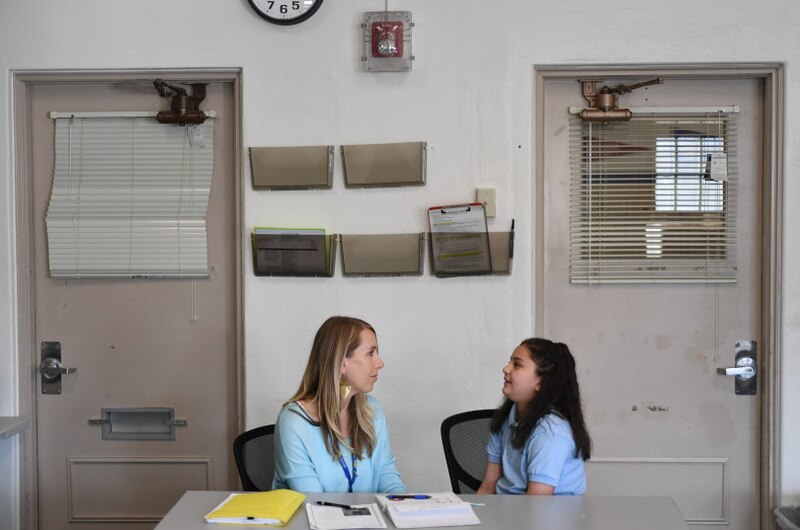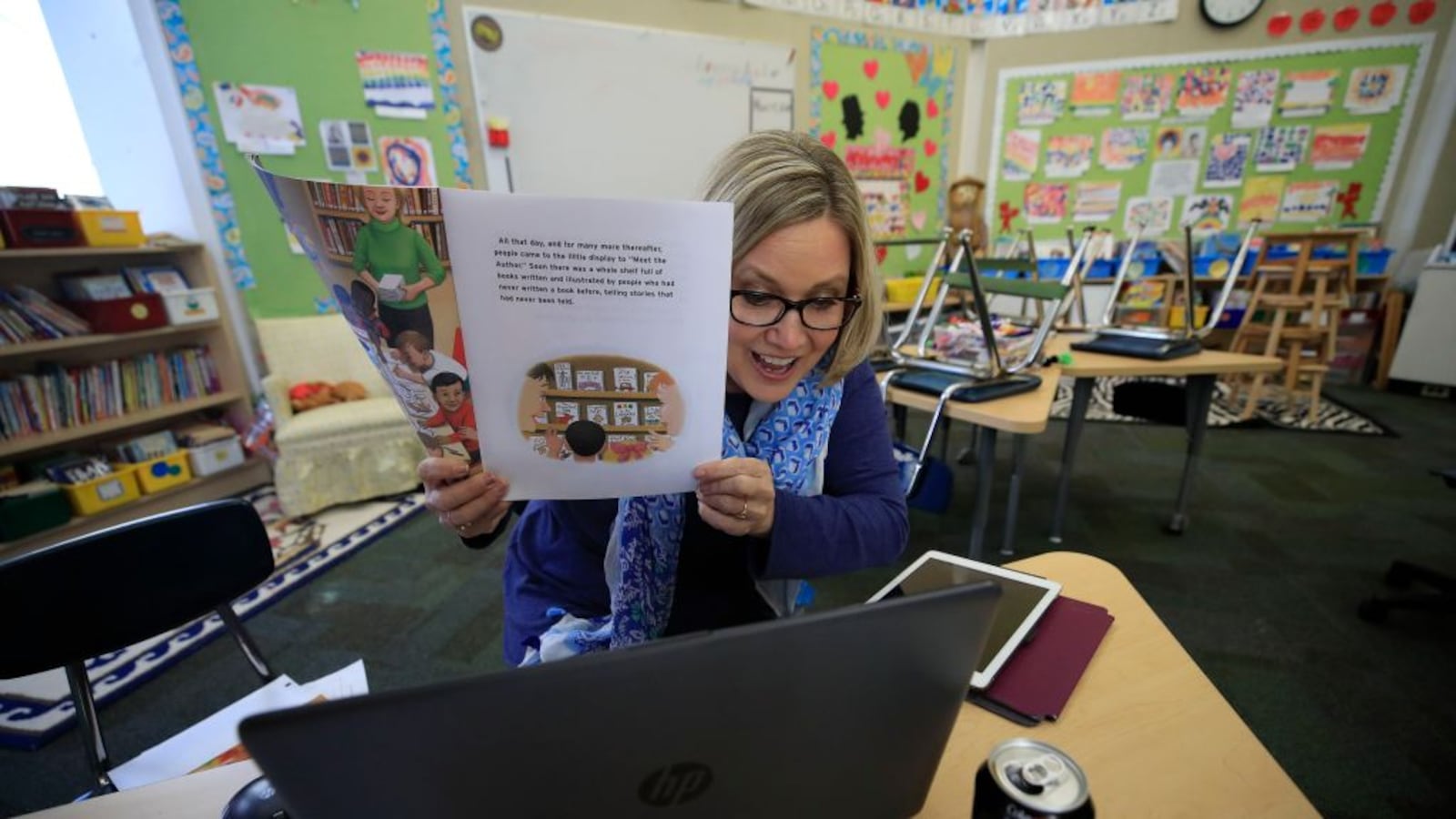When students return to school buildings, teachers and school leaders will face a daunting task: pulling their communities back together while helping students get back on track.
Some students may have lost family members to the disease caused by the coronavirus, and some schools may have lost staff members. And even though lots of schools are attempting remote instruction, students will likely have lost academic ground while buildings were closed.
So what are schools and policymakers to do?
There are no easy answers. But research offers a number of concrete ideas for helping students respond, from changing how the next school year is structured to making sure students don’t lose access to mental health professionals.
Schools can pull off some of these on their own. Others depend on policymakers allocating extra money, or at least protecting schools from deep cuts, a big ask during an economic downturn.
When it comes to making up for lost instruction, “The implications for all levels of policymakers — at the school, district, state, federal level — is this does not come cheap,” said Katharine Strunk, a researcher at Michigan State University.
Here are some ideas that schools and policymakers might consider.
🔗Extend the school day or year
Perhaps the most obvious way to help students make up for months of missed school is simple: give them more time later, with an extended school year or longer school days.
Research offers reasons for optimism. When Florida required low-performing schools to extend the school day, research found that students’ reading scores increased as a result. Another study found that sending struggling students to summer school after eighth grade decreased their chances of dropping out of high school. And students generally learn continuously while school is in session and backslide when it’s not.
“Seat time matters,” said Strunk. “The more that kids receive instruction, the better off they do.”
Schools could also think about adding time more creatively. One option, adopted in some Massachusetts cities, is to turn spring break into a “vacation academy” where struggling students get extra instruction from teachers who opt in and get paid extra. Two studies have found that this worked to boost learning.
An extended school year could also give students with disabilities more time to make up lost services, and give schools more time to figure out whether their needs have changed.
“If a student didn’t get speech therapy for two months, it’s not like you can start the school year and just cram in two months of speech therapy in a month’s time,” said Lauren Morando Rhim, the executive director of the National Center for Special Education in Charter Schools. “You might be able to offer extra hours or weekend services, but I’m guessing it’s going to be a long, slower progress.”
Of course, however it’s constructed, more time means higher costs. And big shifts can be tough to pull off: Last year, for instance, when New Mexico added 25 school days during the summer in response to a court case, some districts struggled to hire teachers on a short timeline and faced pushback from parents.
🔗Provide extra tutoring, particularly for students who are most behind
Another way to catch students up is to make sure students who are behind get tutoring in small groups. Research shows this can make a difference: When students in 12 Chicago public high schools got an hour of math-focused tutoring during the school day, with one instructor (usually a recent college graduate) for every two students, it led to substantially higher test scores, math grades, and lower rates of course failure, one study found. Separate research in Boston and Houston have found this type of tutoring has positive results, too.
Again, cost is a key hurdle. Even when tutors are paid modest stipends, having such a small student-to-staff ratio is extremely pricey.
Matt Kraft, a researcher at Brown University, says that the federal government should consider funding an army of tutors to enter schools on an unprecedented scale. This could have a secondary benefit of providing jobs for recent college graduates struggling to find work in a damaged economy.
“Tutoring presents a great opportunity to have a win-win for the economy and for students,” said Kraft.
One caveat: Tutoring efforts in Atlanta and New York City, where staffing ratios were larger — four or five students per tutor — were not nearly as successful. This suggests that hiring a lot of tutors would be critical to making this work.
🔗‘Loop’ elementary school teachers with the same group of students
What if when elementary school kids return to school they are greeted by a familiar face — their prior year’s teacher?
This practice — known as looping, in which a teacher follows a group of students to the next grade — might make particular sense when students come back. It could provide a degree of emotional security for students who haven’t been in schools for months and make it easier for teachers to help students catch up.
“The benefit would be that those teachers would know immediately where the kids in the classrooms were, at least when they left the classroom,” said Strunk.
Research shows that looping does in fact help students learn more in the following grades, and in general, students benefit from having more “familiar faces”, including classmates, around them in class. Another upside: it costs little or nothing.
Still, the practice comes with its own challenges. If kindergarten teachers loop with their students, schools must figure out who will teach the entering kindergarteners — something teachers in an elementary school’s highest grade, without a class to loop with, may not be enthusiastic about taking on. There is also research showing that teachers benefit from the consistency that comes with teaching in the same grade.

🔗Expand, or at least avoid cutting, the number of adults prepared to help students with trauma and mental health needs
Kids are out of school for a reason: a pandemic that could have caused their parents to lose their jobs or meant they lost a relative to the disease. Virtually all students likely experienced some stress from the disruption to daily routines.
In general, access to school counselors and school-based health clinics helps students, research shows, and they could play a particularly important role in the adjustment period when buildings reopen.
“Before any significant learning can take place, schools need to think very carefully about how they lay the foundation for that supportive and caring climate,” said Jill Cook, the assistant director of the American School Counselor Association. “It can’t be, the second they walk in the door it’s boom, boom, open your math book.”
That period could include a school “needs assessment” to identify what students and staff are coping with, with administrators mapping out their own mental health staff’s capacity and whether they could add support from community-based providers or educator preparation programs.
Counselors, social workers, school psychologists, and nurses could instruct classes, small groups of students, or parents on how to cope with stress and anxiety, in addition to working with individual students most in need of support.
Schools forced to go without those staffers due to budget cuts will be in a tougher position. “We hope that any potential looming budgetary issues or crises will not put these positions in jeopardy,” Cook said. “They’re going to be needed now, more than ever.”
Those staffers may also be key to helping decide how to handle changes in student behavior or academic abilities — and making sure schools aren’t over-identifying students with behavioral or learning disabilities when they may just be responding to stress, for example.
“When kids return, the behaviors that you’re seeing in the immediate short term may or may not be typical for them as they move forward a couple months into the school year,” said Kathleen Minke, the executive director of the National Association of School Psychologists. “It does require some teasing out.”
🔗Integrate coronavirus into the curriculum
Another way schools should try to help students when they return is to integrate virus-related content into the school curriculum.
“Social studies classes can examine current social inequality by examining why some communities were affected by COVID-19 more than others; English classes can include writing prompts about the hidden costs of the pandemic on students’ lives,” said Francis Pearman, a Stanford education professor. “Science classes can examine the ecological determinants of infectious disease.”
Of course, teachers would have to think about how to design content that is grade-appropriate, and creating new material might be particularly challenging when teachers are dealing with so many other changes.
But addressing the pandemic head-on could help children make sense of what is happening in the world and also have academic benefits. Pearman points to research showing that students do better in school when the curriculum is connected to their personal experiences.
“Sometimes adults are reluctant to talk about the events for fear that somehow that will make the child feel bad,” said Minke, of the school psychologists group. “Most often, asking children to talk about their experiences is a good idea. As adults, we need to model, to the extent that we can, a healthy response to this significant stress that everybody has experienced.”


